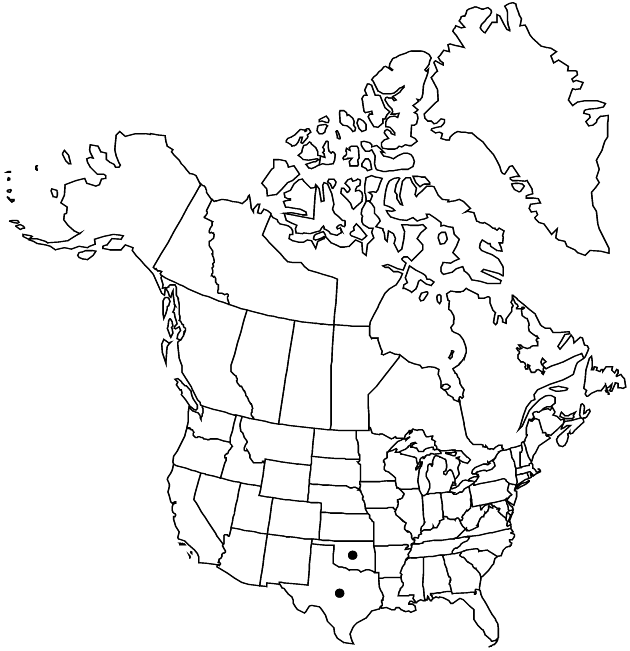Lindheimera texana
Proc. Amer. Acad. Arts 1: 47. 1847.
Leaf-blades 4–12 (–18+) × 1–3 (–5+) cm. Peduncles 1–3 (–6) cm. Phyllaries: outer ± lance-linear to linear, 8–12 mm, scabrellous and/or hispid; inner lanceovate to elliptic, 9–15 mm, scabrellous to glabrate. Ray laminae 10–14 × 4–9 mm. Disc corollas 3–4 mm. Cypselae 4.5–6 mm, ± scabrellous to glabrate (pappuslike processes 0.5–1 mm). 2n = 16.
Phenology: Flowering Mar–Jun.
Habitat: Sandstones, clays, alkaline soils
Elevation: 10–500 m
Distribution

Okla., Tex., Mexico (Coahuila)
Discussion
Leaves, peduncles, and phyllaries of Lindheimera texana sometimes bear stipitate glands reminiscent of glands in some members of Madiinae.
Selected References
None.
Lower Taxa
None.
"broader" is not a number.
... more about "Lindheimera texana"
introrse +
connate +
herbaceous +
scarious +
absent +
hirsute +
papillate +
corymbiform +
bristlelike +
continuous +
cuneate +
ovate;oblanceolate;ovate;oblanceolate;lanceolate +
winged;ribbed;winged;ribbed +
1;15 +
stigmatic +
absent +
Star daisy +
zygomorphic +
winged +
dimorphic +
glabrate +
scabrellous +
4.5mm;6mm +
staminate +
staminate +
straight +
hispid +
scabrellous +
distinct +
proximal +
1;5 +
bisexual +
dispersed +
singly +
discoid +
indeterminate +
Present +
paleate +
glabrate +
scabrellous +
surrounding +
less turbinate;hemispheric +
1cm;3cm +
alternate +
cauline +
deltate +
hispid +
scabrellous +
2-carpellate +
inferior +
attached +
anatropous +
persistent +
fragile +
falling +
absent +
tough +
thick +
absent +
connate +
persistent +
distinct +
falling +
Proc. Amer. Acad. Arts +
1847 +
pistillate +
absent +
fertile +
paleate +
flat;conic;flat;conic;convex +
fibrous +
exalbuminous +
modifed +
Illustrated +
alternate +
branched +
erect +
continuous +
2-branched +
papillate +
Lindheimera texana +
Lindheimera +
species +
shorter +
cylindric +
shorter to longer than campanulate +
annual +
